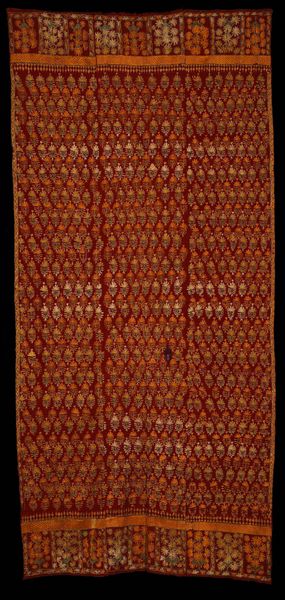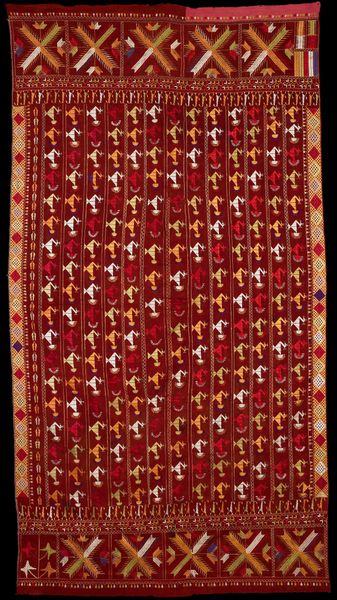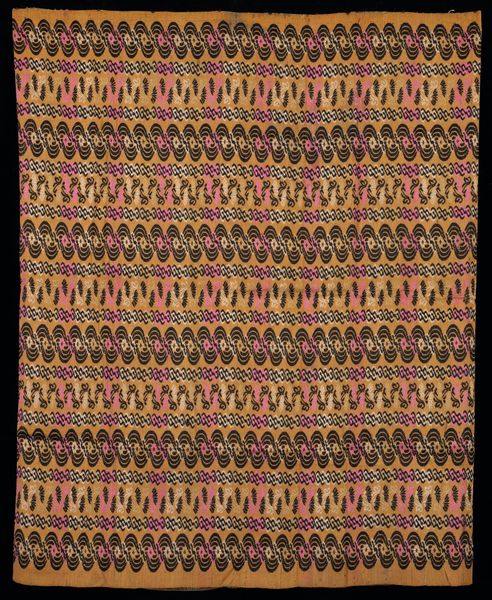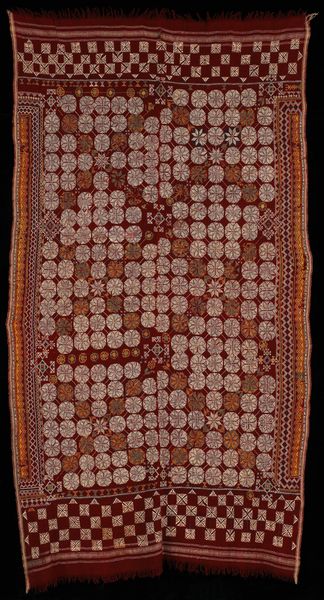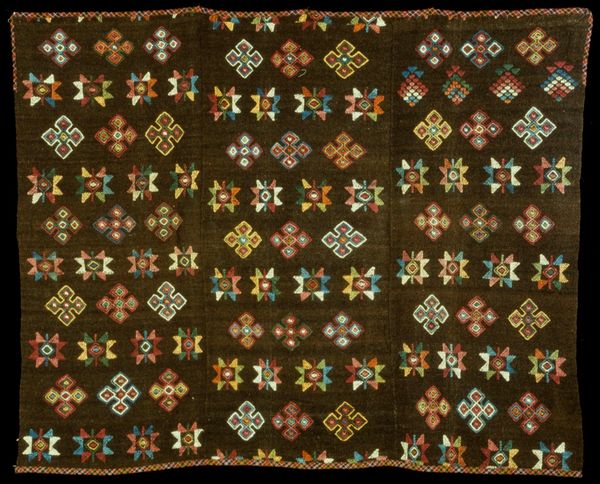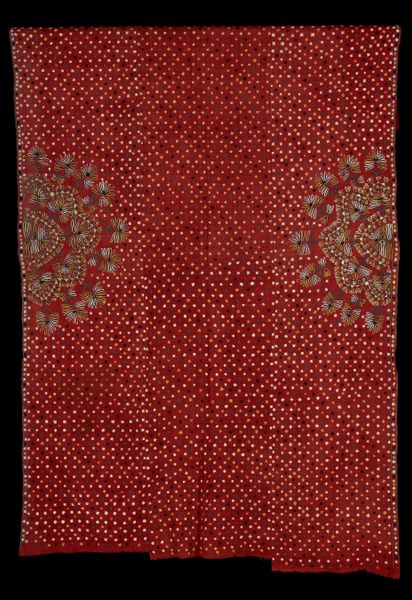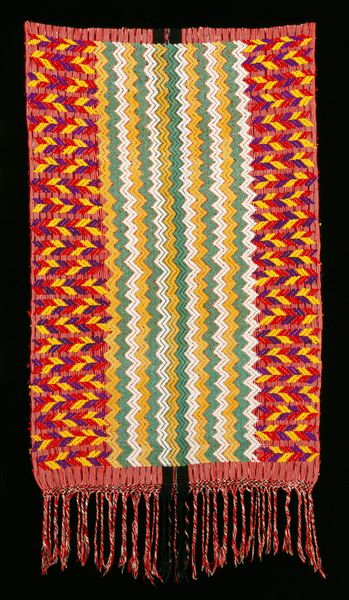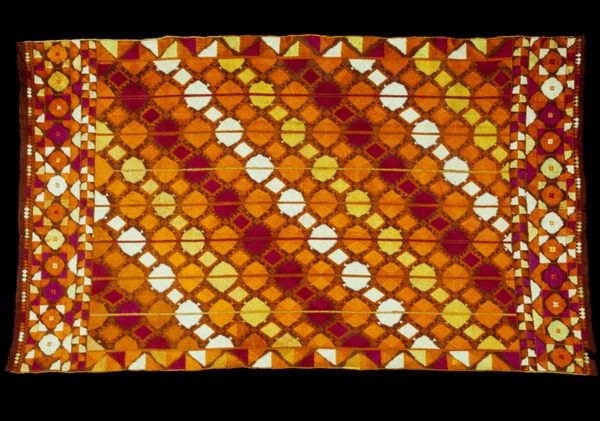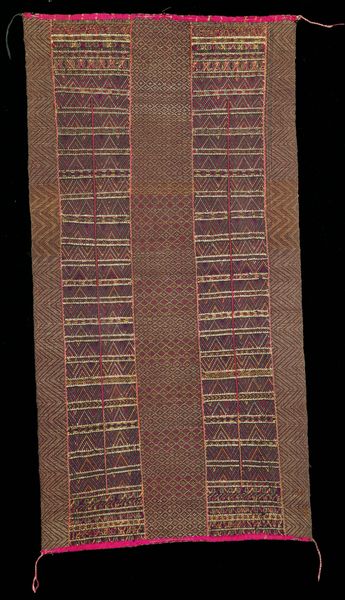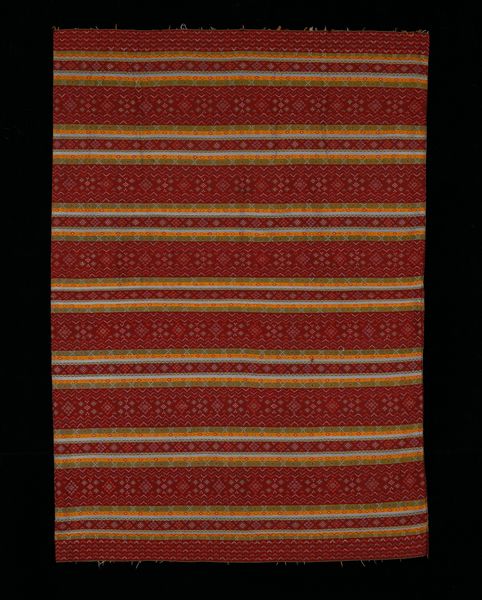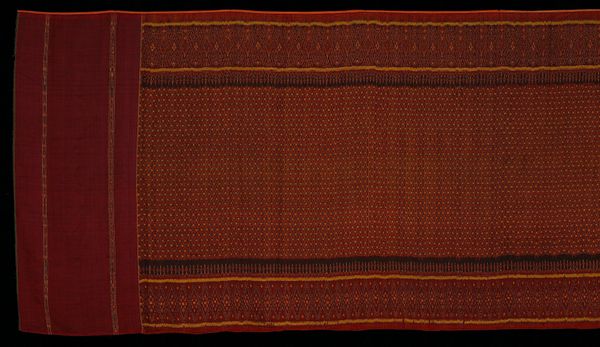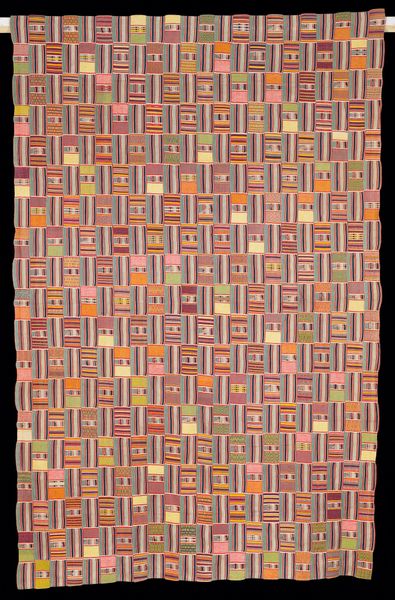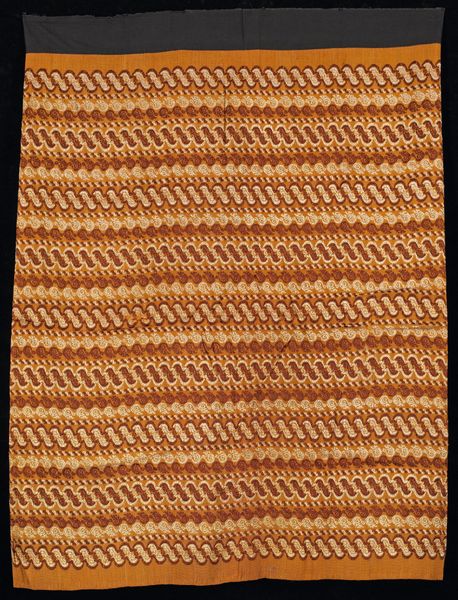
fibre-art, weaving, textile
#
pattern-and-decoration
#
fibre-art
#
weaving
#
textile
#
geometric pattern
#
geometric
Dimensions: 95 3/4 x 54 in. (243.21 x 137.16 cm)
Copyright: Public Domain
Curator: What an intricate piece. This textile, titled "Phulkari," dates from somewhere between 1925 and 1950. It's currently held here at the Minneapolis Institute of Art. Editor: It’s visually striking. At first glance, the overwhelming geometric pattern is calming and mesmerizing, like looking into an optical illusion. It seems to vibrate with its tiny mirrored shapes. Curator: Phulkari, meaning "flower work," represents a significant tradition in Punjabi culture, particularly for women. We're seeing the incredible density of silk embroidery on cotton. Can you imagine the hours of labor? Editor: Absolutely. That speaks volumes. Phulkari wasn’t merely decoration, it was a social and familial act. The cloth was traditionally made by women for family events. You can see the dedication and love poured into the tight patterns. But what about the use within popular culture; was Phulkari meant for everyone to see, or for special, intimate use? Curator: The reception varied; a Phulkari held social significance as emblems of womanhood, identity, and cultural status. These pieces would’ve been gifted at weddings and births. We can see a geometric field punctuated by pink and purple, disrupting the yellow landscape of cotton with deliberate, almost joyful dissonance. The act of gifting, in a way, helps with the transfer of care, as women gifted Phulkari and also gifted that symbolic transference. Editor: So this geometric work became public, then, as a sign of celebration within the Punjab. And consider the socio-economic implications of its production: the availability of materials like silk and cotton, access to dyes, and even the leisure time required. The embroidery represents the collective experience of the community itself. You know, seeing Phulkari elevated within museum spaces really does force me to reconsider the Western, hierarchical concept of art versus craft, and it broadens conversations about artistic expression for many. Curator: I concur wholeheartedly. I feel privileged knowing more about Phulkari. It underscores the complex intertwining of production, tradition, and social significance, offering insight into artmaking for both maker and institution. Editor: Exactly. It makes us think deeply about the way a simple textile is made with readily accessible materials can reverberate and reflect so many intricate societal roles.
Comments
No comments
Be the first to comment and join the conversation on the ultimate creative platform.
